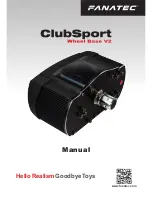
121
T C U T r a n s d u c e r C o n f i g u r a t i o n E x a m p l e s
High float
condition
• Transducer
fault alarm
• High well
alarm
All pumps on
High and transducer fault alarms are generated. All
pumps are staggered on. The TCU switches pump
control to the second analog input. Minimum pump
run and off timers are applied. When the high float
turns off, the high well alarm clears and normal pump
operation resumes. The transducer fault alarm remains
active and control remains with the second analog
input until the TCU has been reset.
Concurrent
transducer high
and high float
conditions
High well alarm
All pumps on
A high well alarm is generated, and all pumps are
staggered on. A transducer fault is not generated if
events occur in the following sequence: transducer
high condition procedes high float coming on; and
high float going off precedes transducer returning to
normal level. When all high conditions clear, normal
pump operation resumes.
Concurrent
transducer low
and high float
conditions
• Transducer
fault alarm
• Low well
alarm
• High well
alarm
All pumps on
Low, high, and transducer fault alarms are generated.
The TCU switches pump control to the second analog
input. The high float on condition takes precedence
over the transducer low condition, and all pumps
are staggered on. Minimum pump run and off timers
are applied. Normal pump operation resumes on the
second analog input if both conditions clear. The
transducer fault alarm remains active and pump control
remains with second analog input until the TCU has
been reset.
Low float
conditions
Low well alarm
All pumps off
A low well alarm is generated, and all pumps are shut
off. When the low float condition clears, normal pump
operation resumes.
IMPORTANT:
A low float condition has precedence
over
all
other faults and alarms, including high float
and high level. If a low float condition exists, no
pumps will be allowed to start.
Discrete System (Pump Down Mode)
A discrete system uses contact closure devices that provide an On/Off signal. These are typically float balls submersed into
a wet well. The floats are wired to the appropriate inputs on the TCU. The TCU then controls the operation of up to three
pumps based on input signals from these floats.
The number of floats required depends on the number of pumps at a station.
• A simplex station (one pump) requires floats at the Lead and Off staging levels.
• A duplex station (two pumps) requires floats at the Lead, Off, and Lag staging levels.
• A triplex station (three pumps) requires floats at the Lead, Off, Lag, and Lag2 staging levels.
A discrete system requires that all float devices be wired to the appropriate TCU inputs, and the transducer type in the
TCU’s configuration be set to Floats.
Summary of Contents for TCU800
Page 1: ...Installation and Operation Manual T C U 8 0 0 Data Flow Systems Inc P r e l i m i n a r y ...
Page 2: ...Intentionally left blank ...
Page 4: ...D a t a F l o w S y s t e m s I n c Intentionally left blank ...
Page 8: ...ii Intentionally left blank ...
Page 10: ...ii Intentionally left blank ...
Page 56: ...46 C h a p t e r 5 Quick View Analog View Pump Statistics ...
Page 57: ...47 U s e r I n t e r f a c e Alarms Settings Screen 1 Settings Screen 2 ...
Page 58: ...48 C h a p t e r 5 Advanced Settings About ...
Page 77: ...67 O p e r a t i n g P r o c e d u r e s TCU Installed in Existing Control Panel ...
Page 87: ...77 M o d b u s S u p p o r t Figure 1 Figure 2 Figure 3 ...
Page 92: ...82 D a t a F l o w S y s t e m s I n c Appendix ...
Page 157: ...147 D a t a F l o w S y s t e m s I n c ...
Page 158: ...148 D a t a F l o w S y s t e m s I n c ...
Page 159: ...149 D a t a F l o w S y s t e m s I n c ...
Page 160: ......
















































